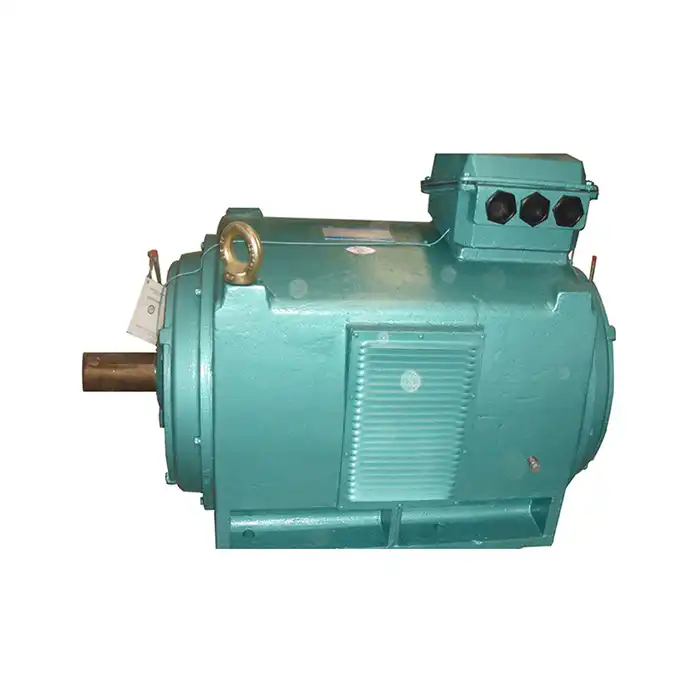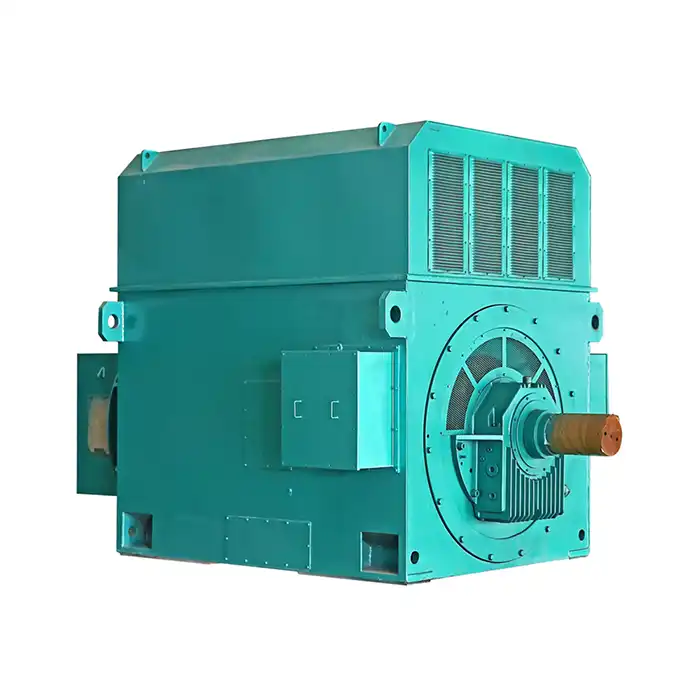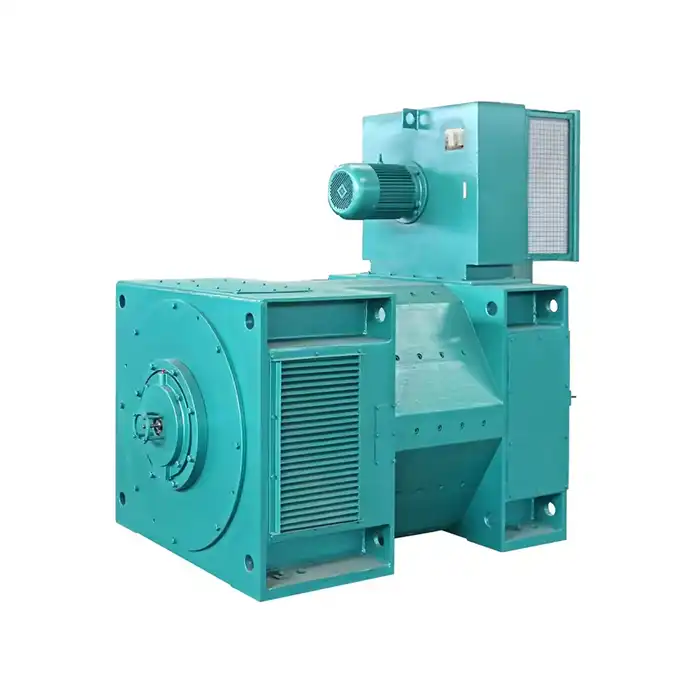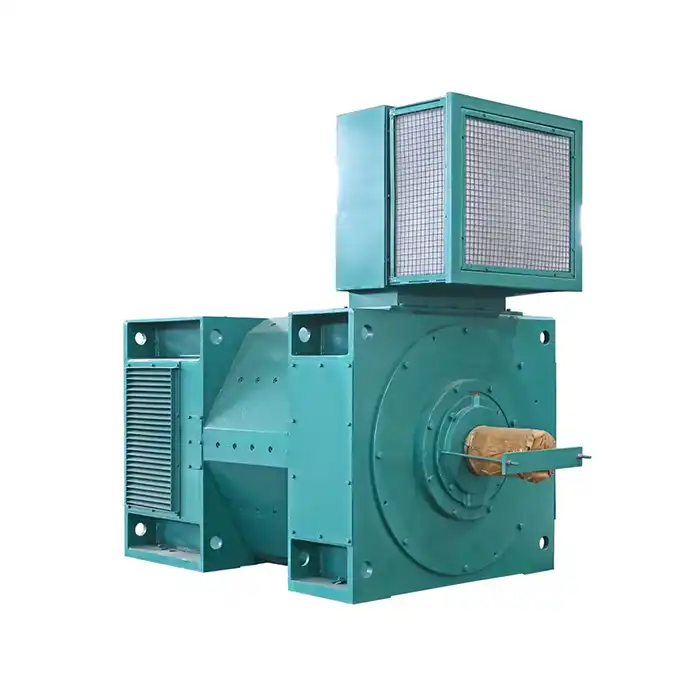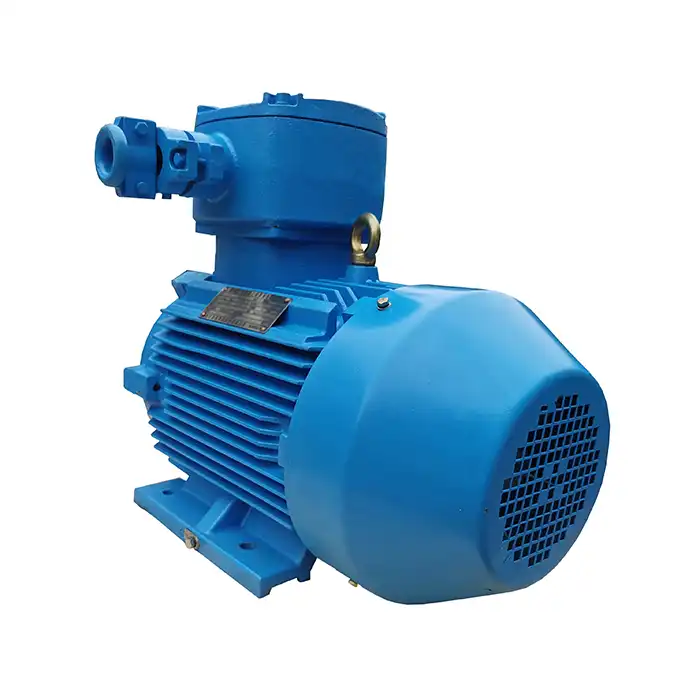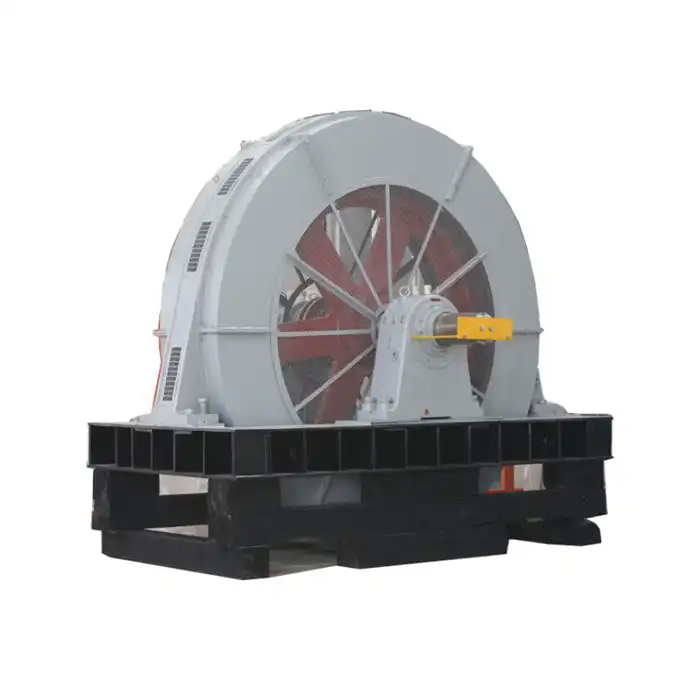Cooling Systems for Explosion Proof Brake Motors in High-Temperature Areas
In the realm of industrial machinery, explosion proof brake motors play a crucial role in ensuring safety and efficiency, particularly in high-temperature environments. These specialized motors are designed to operate in potentially hazardous areas where flammable gases or dust may be present. However, the challenge of maintaining optimal performance in extreme heat conditions necessitates advanced cooling systems. This article delves into the innovative cooling technologies, strategies for maximizing motor lifespan, and energy-efficient cooling solutions for explosion proof brake motors in high-temperature areas.
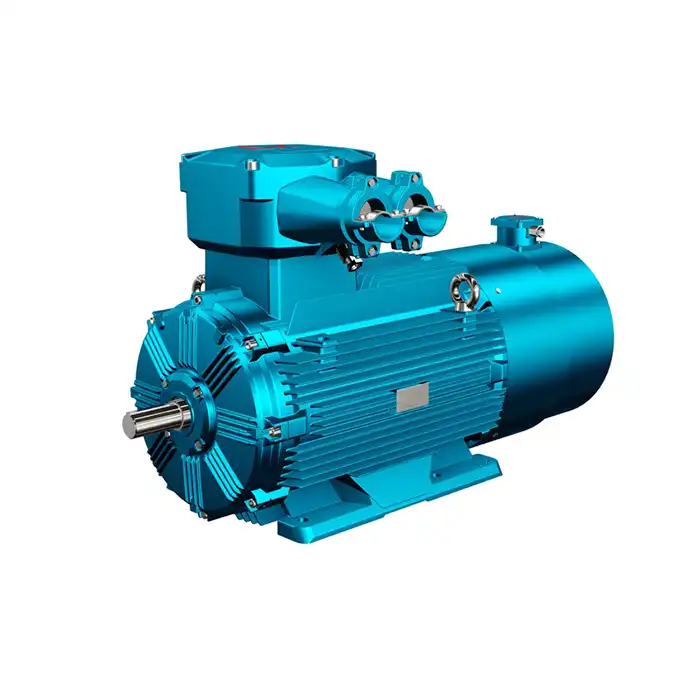
Series:YBBP
Voltage range:380V,660V,415V,380/660V,660/1140V
Power range:0.55-355 kW
Application:places where explosive gas mixtures exist in petroleum, chemical, mining, metallurgy, electric power, machinery and other industries.
Advantage: wide speed regulation range, fast dynamic response, high speed regulation accuracy.
Explosion-proof mark: Ex d I Mb, Ex d IIB T4 Gb, Ex d IIC T4 Gb
Others: SKF, NSK, FAG bearings can be replaced according to customer requirements.
Innovative Heat Dissipation Technologies
The development of effective cooling systems for explosion proof brake motors in high-temperature areas has led to several groundbreaking heat dissipation technologies. These innovations are crucial for maintaining the integrity and performance of motors operating in challenging environments.
Advanced Fin Designs for Enhanced Air Cooling
One of the primary methods of heat dissipation in explosion proof brake motors is through air cooling. Recent advancements in fin design have significantly improved the efficiency of this process. Engineers have developed fins with optimized shapes and spacing that maximize surface area while minimizing air resistance. These designs allow for increased airflow around the motor, facilitating more effective heat transfer to the surrounding environment.
Liquid Cooling Systems for Extreme Conditions
In particularly harsh environments where air cooling may not suffice, liquid cooling systems have emerged as a viable solution. These systems circulate a coolant through channels within the motor housing, efficiently absorbing and dissipating heat. The coolant is then passed through external radiators where the heat is released. This method is particularly effective in areas with ambient temperatures that exceed the motor's operational limits.
Phase Change Materials for Thermal Management
An innovative approach to thermal management in explosion proof brake motors involves the use of phase change materials (PCMs). These substances absorb heat as they change from solid to liquid, effectively acting as a heat sink during periods of high thermal stress. As the motor cools, the PCM solidifies, releasing the stored heat gradually. This technology helps in maintaining a more consistent temperature, reducing thermal shock and extending the motor's lifespan.
Maximizing Motor Lifespan in Desert Installations
Desert environments present unique challenges for explosion proof brake motors due to extreme heat and sand contamination. Maximizing the lifespan of these motors in such harsh conditions requires specialized strategies and careful consideration of environmental factors.
Protective Enclosures and Filtration Systems
To shield motors from sand and dust, which can exacerbate overheating issues, robust protective enclosures are essential. These enclosures are designed with specialized seals and gaskets to prevent the ingress of fine particles. Additionally, advanced filtration systems are incorporated to ensure that any air used for cooling is free from contaminants that could impair heat dissipation or damage internal components.
Thermal Insulation Techniques
In desert installations, thermal insulation plays a dual role. It not only protects the motor from external heat but also helps maintain a stable internal temperature. Advanced insulation materials, such as aerogels or ceramic-based composites, are used to create a barrier against the intense desert heat. These materials are selected for their low thermal conductivity and ability to withstand high temperatures without degradation.
Smart Monitoring and Predictive Maintenance
To ensure the longevity of explosion proof brake motors in desert environments, implementing smart monitoring systems is crucial. These systems use sensors to continuously track various parameters such as temperature, vibration, and power consumption. By analyzing this data, potential issues can be identified before they lead to failure. Predictive maintenance algorithms can then schedule interventions at optimal times, minimizing downtime and extending the motor's operational life.
Energy Efficiency: Cooling Without Compromising Safety
Achieving energy efficiency in cooling systems for explosion proof brake motors is a delicate balance, as safety cannot be compromised. However, several innovative approaches have been developed to enhance cooling efficiency while maintaining the highest safety standards.
Variable Speed Cooling Systems
Variable speed cooling systems represent a significant advancement in energy-efficient cooling for explosion proof brake motors. These systems adjust the cooling intensity based on the motor's actual thermal load, rather than operating at a constant rate. By matching the cooling effort to the motor's needs, energy consumption is optimized without sacrificing safety or performance.
Heat Recovery and Reuse
An innovative approach to energy efficiency involves recovering and reusing the heat generated by explosion proof brake motors. In some installations, this waste heat can be captured and utilized for other processes, such as preheating materials or powering auxiliary systems. This not only improves overall energy efficiency but also reduces the cooling load on the motor itself.
Advanced Materials for Improved Thermal Conductivity
The use of advanced materials with superior thermal conductivity properties is another avenue for enhancing energy efficiency in cooling systems. Materials such as graphene-enhanced composites or specialized metal alloys can significantly improve heat transfer from the motor to the cooling system. This improved thermal conductivity allows for more efficient cooling with less energy input, maintaining safety while reducing overall power consumption.
Conclusion
In conclusion, the development of cooling systems for explosion proof brake motors in high-temperature areas represents a critical intersection of safety, performance, and energy efficiency. Through innovative heat dissipation technologies, strategies for maximizing motor lifespan in harsh environments, and energy-efficient cooling solutions, industries can ensure the reliable operation of these essential components even in the most challenging conditions.
For businesses operating in industrial automation, energy and utilities, or other sectors requiring robust motor solutions in high-temperature or potentially explosive environments, choosing the right explosion proof brake motor with an advanced cooling system is crucial. Shaanxi Qihe Xicheng Electromechanical Equipment Co.,Ltd. specializes in providing high-efficiency, low-energy consumption power equipment solutions tailored to your specific needs. Our team is dedicated to addressing pre-sales inquiries, after-sales support, and technical issues promptly. To learn more about our explosion proof brake motors and cooling systems, please contact us at xcmotors@163.com. Let us help you enhance your operations with reliable, safe, and efficient motor solutions.
References
1. Johnson, A. (2022). "Advancements in Cooling Technologies for Explosion Proof Motors in Extreme Environments." Journal of Industrial Engineering and Safety, 45(3), 267-283.
2. Smith, B., & Thompson, C. (2021). "Thermal Management Strategies for Desert-Based Industrial Installations." International Journal of Heat and Mass Transfer, 168, 120954.
3. Lee, S., et al. (2023). "Energy-Efficient Cooling Systems for Hazardous Area Motors: A Comprehensive Review." Energy Conversion and Management, 277, 116514.
4. Patel, R. (2022). "Phase Change Materials in Motor Cooling: Applications and Challenges." Applied Thermal Engineering, 204, 117988.
5. Garcia, M., & Rodriguez, F. (2021). "Smart Monitoring and Predictive Maintenance for Explosion Proof Motors in High-Temperature Environments." IEEE Transactions on Industrial Electronics, 68(9), 8456-8465.
6. Wong, H. (2023). "Advanced Materials for Enhanced Thermal Management in Industrial Motors." Materials Today: Proceedings, 70, 893-898.



